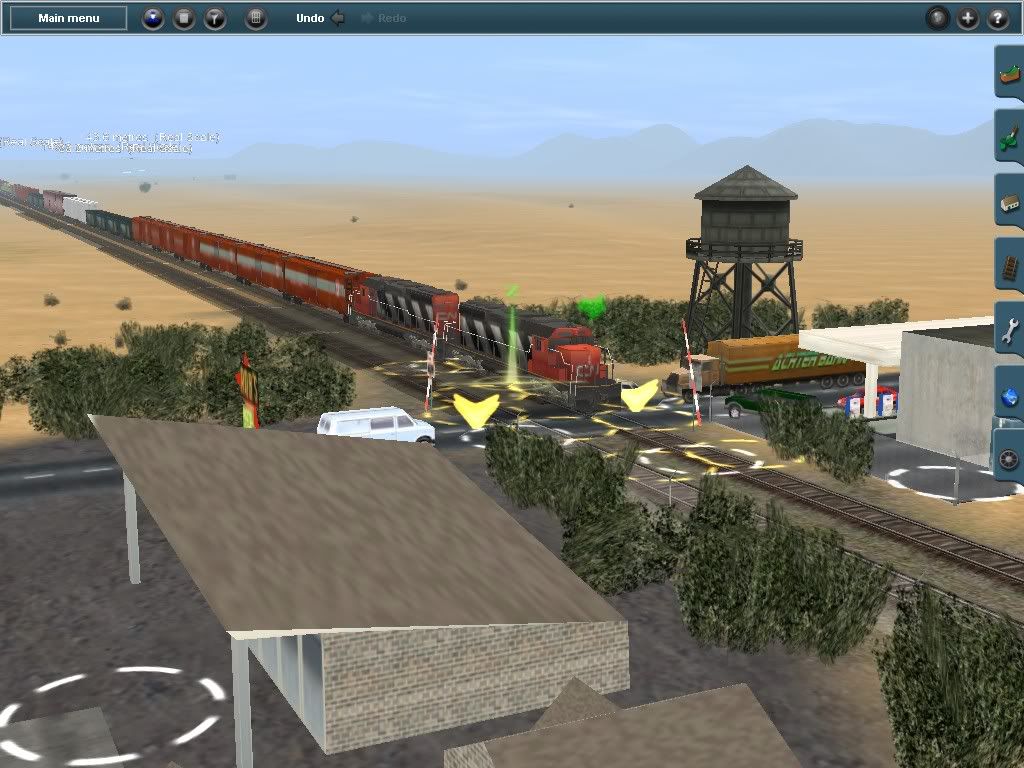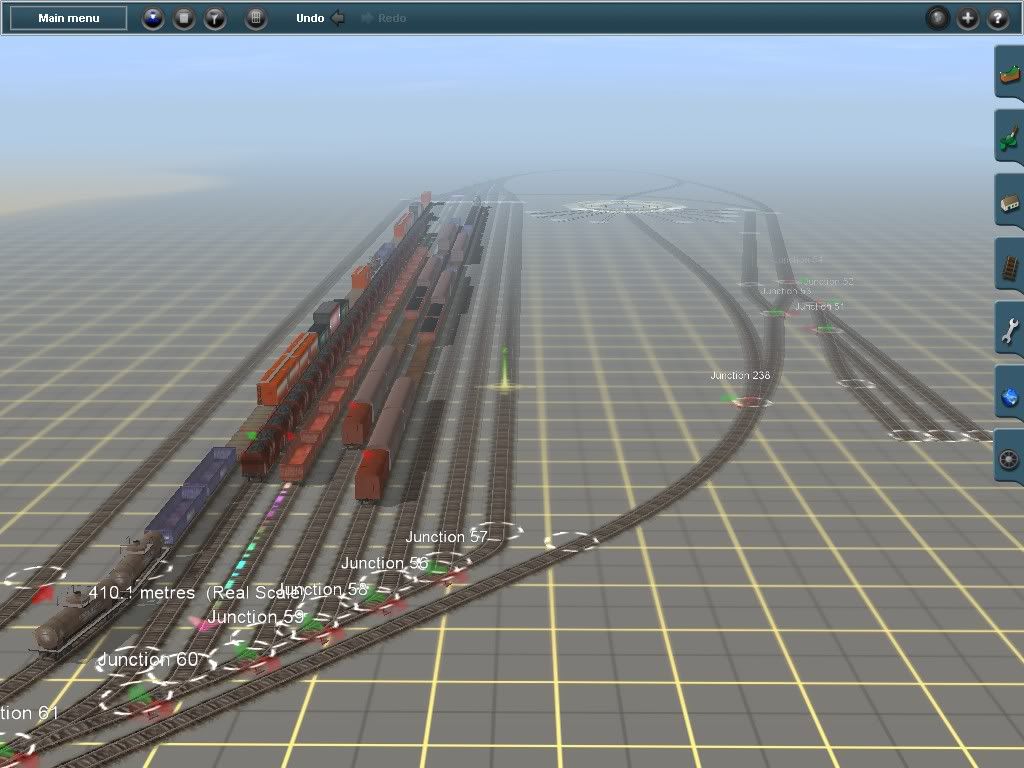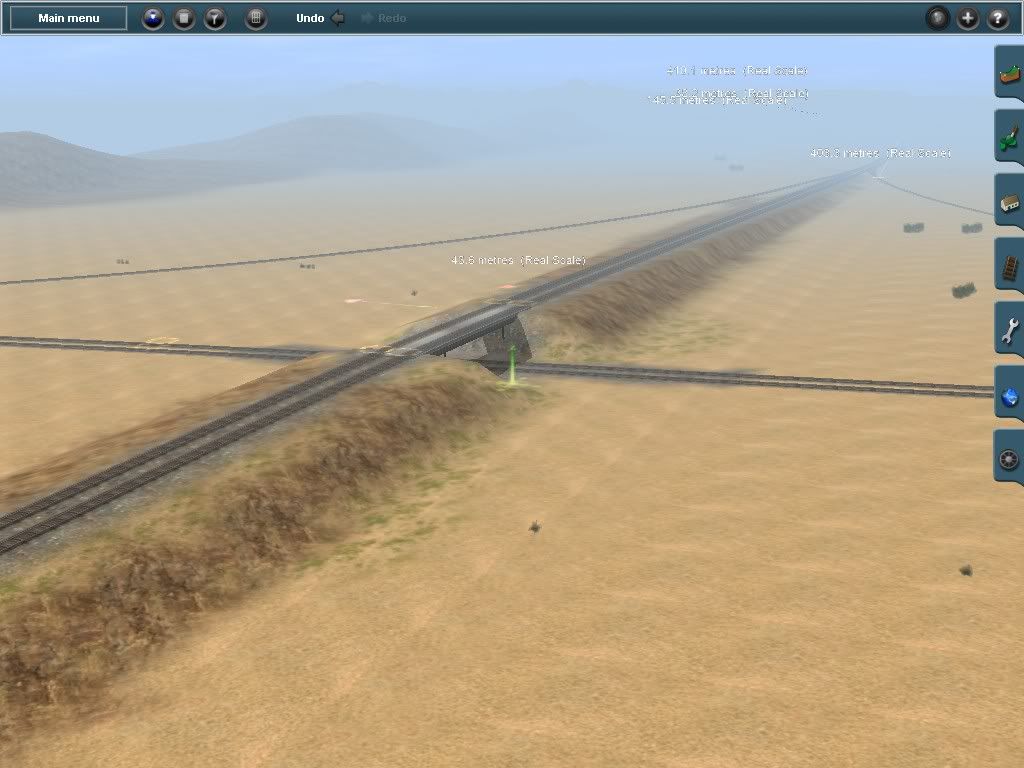Hello. I just recently bought trainz.

I have started many of layouts, but what ever i do, i cannot get the track to seem 'realisitic'.

I was wondering if anyone could give me some pointers, or some layout plans. I want to make a industrial line. But i dont know where to start!
The first question to answer is what kind of line you want to build. Are you looking to build a typical "model railroad" style line, or a line which operates more like the prototype? From a design standpoint, most railroads which have a loop structure are based upon a model railroad operating philosophy; railroads based upon a prototype operating philosophy will generally not have loop, at least not as part of the overall operational structure.
Well, when I start, the first thing I try to do is to decide where, and what kind of line I want to build. By where I mean, what part of the country, (Northeast, Midwest, Southeast, Northwest) and the nature of the area. Do you want to build a railroad serving manufacturing businesses in an urban area, or one serving areas which produce raw materials like lumber and other forest products, or grain, or mined products like coal or ore? Do you you have a favorite type of railroad car; a favorite railroad, a favorite kind of engine? Answering these questions can help you better decide where to start. For example, consider coal mining. Coal mining is done in the Appalachians, the Rockies, the Powder River basin area of Wyoming, and Southern Illinois, and the terrain in each area is different from the terrain in each of the others. This is important because it affects such factors as what kind of locomotives your railroad will need, and how much power will be needed to move a ton of coal from the mine to the end of the railroad. A railroad serving a manufacturing and industrial area in an urban setting will have a different look and feel than a railroad serving substantially similar types of facilities in a more rural setting. The urban setting will be more compact, and have a greater developed density, that is, the same amount of business will be done in less space than in a rural setting.
Another tip: start small. There are short railroad lines which serve only a single industry, and which are short enough to fit in just a boards or two. I'd guess that someone new to railroads would be more likely to complete a route that comprises just a board or two than a larger one, and since a small route will be finished more quickly, the level of satisfaction will be greater.
One thing to keep in mind from the very beginning of planning a route. Once you've started the route, it is not presently possible to turn it, so what is North at the beginning will always be North, and if you decide that you'd prefer that what is now North was instead of West, you'll have to start from scratch.
Also when 'painting' when painting at anything that doesnt run with the grid, the lines are never smooth, is there anyway to fix this, if so how?
When I do a route, I do it in a little different order than Auran. The first thing I do is answer the questions above--where the route is, and why it exists. If I don't already know the area in which I want to build the route, and I'm not modeling an exact line, I spend a bit of time looking at photos and maps of the area that I have decided to build, to get a feel for the typical terrain. Then I start thinking about the kind of views I want to see when operating the route, or while watching it operate.
Having done that, I get a rough idea of the terrain, including where the rivers and streams will be. Then I consider approximately where some of the businesses will be, based upon the terrain. For example, while there are mines in relatively flat areas, most mining occurs in rougher terrain. In terms of agriculture, plant based products (grain, &c) are more common from less rugged areas, while more rugged areas frequently are areas where one finds animal husbandry. Business which need power were in olden times frequently found in the vicinity of water, which could be used to power mills, and successors to the early mills were often built in proximity to the earlier versions.
When I have a sense of the terrain, and the location of early businesses, then I think about how and where the railroad would have been built to serve those industries at the time the railroad was built. Given an industry in a specific place, the railroad built in 1880 to serve that industry will be built differently than the railroad built to serve the exact same industry in the same place which was constructed in 1915, which in turn would be different from the railroad built in 1950, which was different than the railroad constructed in 1985, the differences stemming from the size of the equipment, and the ability of human engineering to build the line. The line which in 1880 might have wound along a contour, with several bridges, in 1915 might have gone through a tunnel on a more direct route; in 1950 the line might have gone through a different routing, and instead of a tunnel, have been built through a cut. The surveryors and engineers building the line in 1985 would have used different alignments to account for larger equipment in regular use than the alignments their predecessors would have used to serve the same businesses in earlier years.
When I have a sense of the terrain, rivers, and early businesses, then I begin to determine where later arrivals would have arranged themselves. Early towns and villages would have tended to be located where railroads crossed railroads, or where railroads crossed rivers. And roads and highways tended to be build radiating from villages. When I have gotten to this point, then I am ready to actually start building the route.
I do this a bit different than what the manual advocates, in that I locate things based upon the rough order I outline above. I will sometimes reverse engineer the terrain, using a reasoning process of "I want this industry here, but I want this scene, so what geographical features might have caused the railroad to be built in this way", and then building the terrain to justify the look I want.
While Auran advocates painting texture early, I have a substantial amount of other items in the route before I seriously begin painting ground texture. But here's a key to ground texturing: in producing the completed scene, Auran applies the texture in the scene at about the point at which they add it in the process they advocate, so that first the terrain is built, and then the ground texture is applies. But the other items--buildings, roads, and track are placed after the ground texture, and the ground texture does not show through. You can use this to your advantage. You want a sharp delineation between textures? Hide the overspray with something--a road, or a length of track, or a line of buildings. Do it this way, and people won't be able to see that there the border between the textures on either side aren't a sharp line, because the road (or whatever) hides it. Course some things hide better than others, and part of the fun (in my view anyway) of building a route is learning which things work and which don't.
Finally, I suspect that a lot of the routes you see on the DLS, and in other places are collaborations, in part because different people have different strengths. You might want to see if there is anyone who would like to collaborate with you on an industrial line. The two worst things that can happen if you ask, are that no one will answer, and that everyone will say no. On the other hand, you might get a team of respondents who become friends, and the group of you might put together the Next Great Route.
ns


 :udrool:
:udrool:



